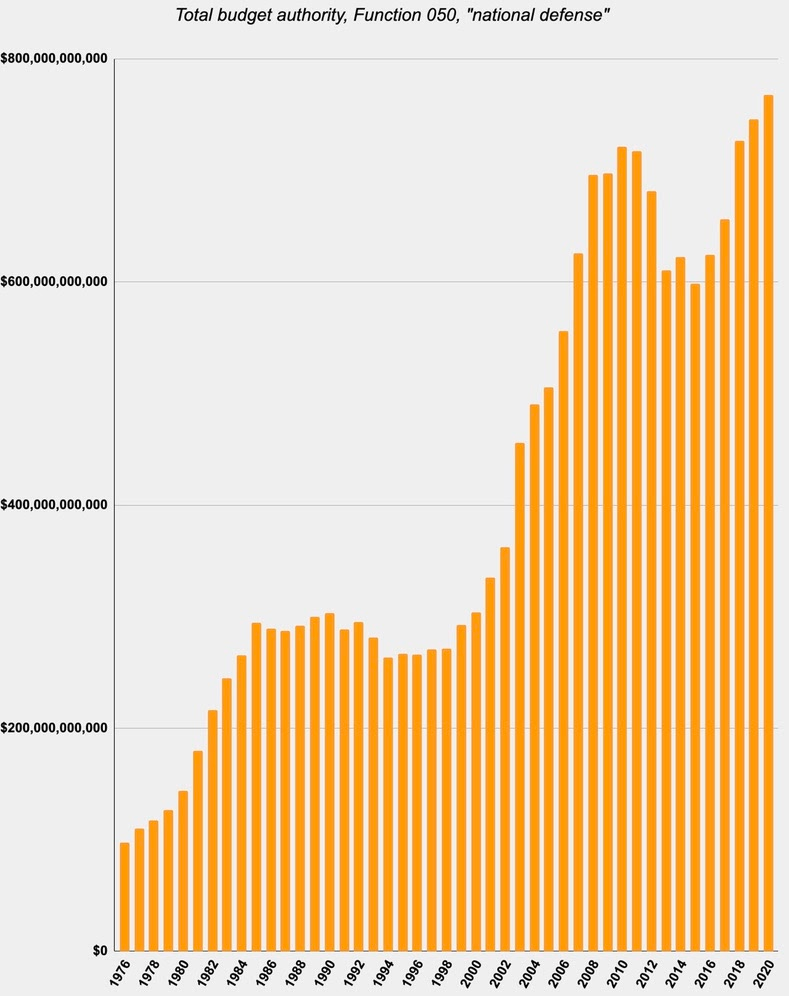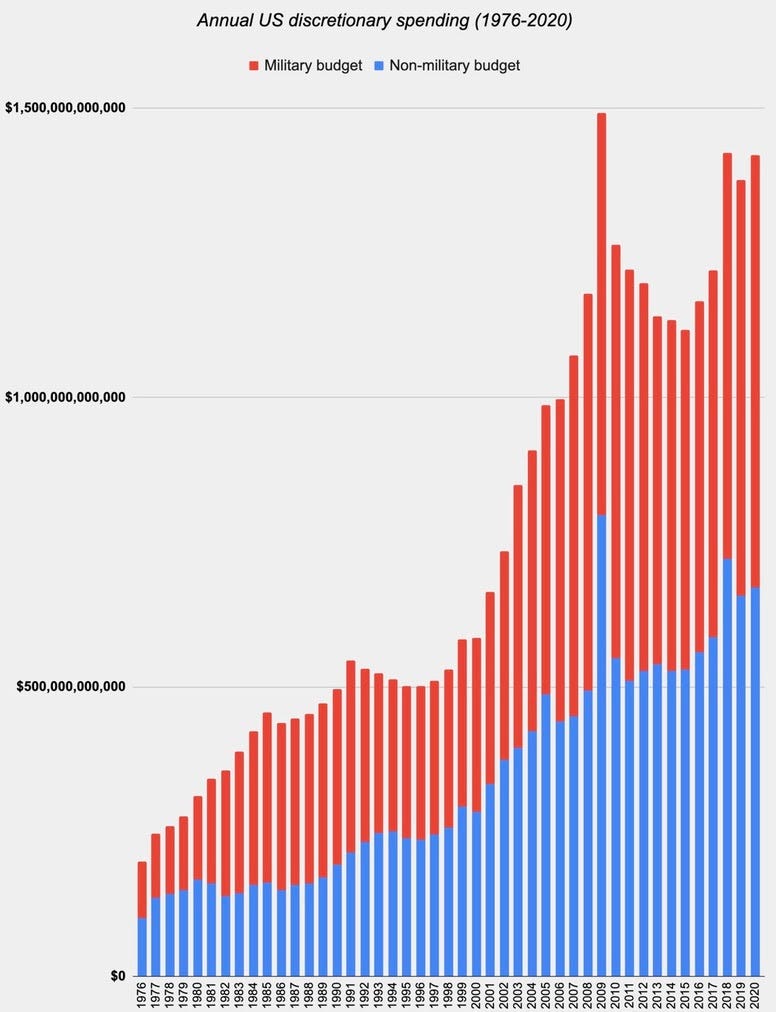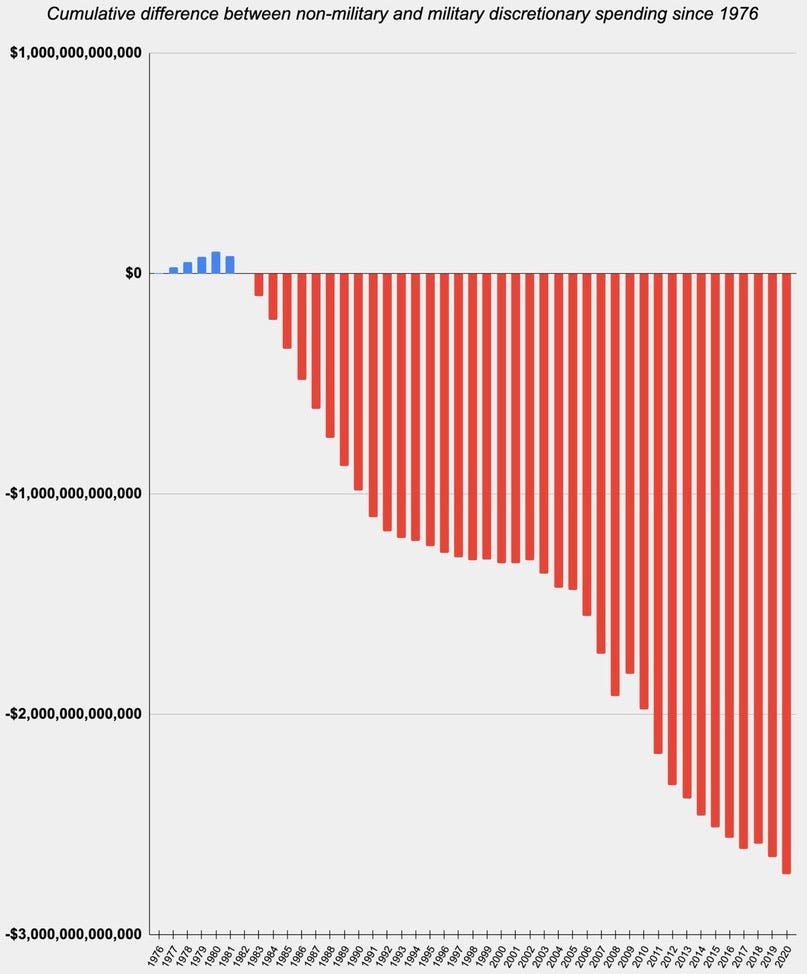Congress authorized $1.4 trillion more in military than non-military spending since 2001, a breakdown
Speaking Security Newsletter | Advisory Note for Organizers and Candidates, n°64 | 4 January 2021
I looked at every annual US federal budget (discretionary spending only) from the last 45 years to see how Congress funded military vs. non-military/social programs. Since 1976, Congress has authorized $2.7 trillion more on the military (since 2001: +$1.4 trillion).
If you find this newsletter useful and have the means, please consider supporting my think tank (SPRI), here.
Situation
Here’s what Congress decided to spend on the military over the last 45 years. For FY2020 (most of this past calendar year), Congress ended up authorizing more than $767 billion in military spending.
^Data via OMB. FY2020 sum adjusted by me per the amount DOD received from the CARES Act. The figures above are in then-year dollars — adjusting for inflation was an option but I couldn’t figure out how to do that without negating the cost growth unique to the sector (everything’s getting more expensive but perhaps none faster than military equipment — the year-to-year cost increase to build some items is 3-5 times that of inflation).
Purported parity
A common argument defending runaway military budgets is that social spending has kept up, thereby preserving the 50-50 defense-vs-nondefense funding split. There’s some truth to this:
^Data via OMB
But there’s two problems with the argument above. This first is its charitable framing: the defense budget is just one of 12 appropriations bills, so if funding between accounts was truly ‘equal’ it would receive 8.3 percent of the annual federal discretionary budget and not ~50 percent.
The second problem with this argument is that it’s wrong. Here’s a graph that shows the cumulative imbalance. Starting in 1976, I subtracted military from non-military spending for each annual budget and kept a running total through 2020 (so a positive value in a given year means that non-military budgets have been higher to that point; a negative value means military budgets have been higher).
Findings:
Since 1976, Congress has authorized $2,725,195,000,000 more for military than non-military programs.
Since 2001, Congress has authorized $1,410,814,000,000 more for military than non-military programs.
^Data via OMB
Thanks for your time,
Stephen (@stephensemler; stephen@securityreform.org)
Find this note useful? Please consider becoming a supporter of SPRI. Unlike establishment think tanks, we rely exclusively on small donations.



